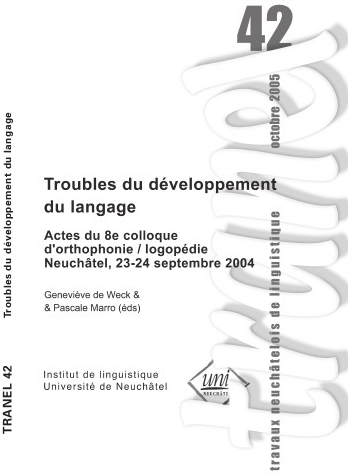Conduites explicatives dans la narration et effet de l’étayage: méthodes d’analyse et quelques résultats qualitatifs tirés d’une étude développementale et comparative d’enfants typiques et d’enfants dysphasiques
DOI :
https://doi.org/10.26034/tranel.2005.2624Résumé
This paper presents preliminary analyses of data from a larger study in which normally developing and SLI children aged between 4-6 and 11 years participated. This study bears on children’s narratives produced on the basis of five images representing the «stone story». Children are requested to tell a first story after having looked at the images, and then to recount it after a child-centered, Piagetian kind «clinical» scaffolding aiming at soliciting the expression of the reasons for the story key events. After dealing with the issue of what constitutes a narrative, the paper illustrates the notion of «point of view» and the idea the meaning of the narrated aspects of the story depends on the narrative and explicative set of relations in which they are embedded. Then, after providing criteria for identifying the expression of explanatory relations in all those cases in which no specific linguistic connectors are used, we illustrate, through examples drawn from typical and SLI children, a way to evaluate the joint effect of scaffolding, of time and of repetition on the second narrative. The final section discusses the possibility to consider the narrative situation involving the «stone story» as a simple tool to evaluate the later development of children’s theories of mind.Téléchargements
Publié-e
01-10-2005
Comment citer
Veneziano, E., & Hudelot, C. (2005). Conduites explicatives dans la narration et effet de l’étayage: méthodes d’analyse et quelques résultats qualitatifs tirés d’une étude développementale et comparative d’enfants typiques et d’enfants dysphasiques. Travaux neuchâtelois De Linguistique, (42), 81–103. https://doi.org/10.26034/tranel.2005.2624
Numéro
Rubrique
Article thématique


